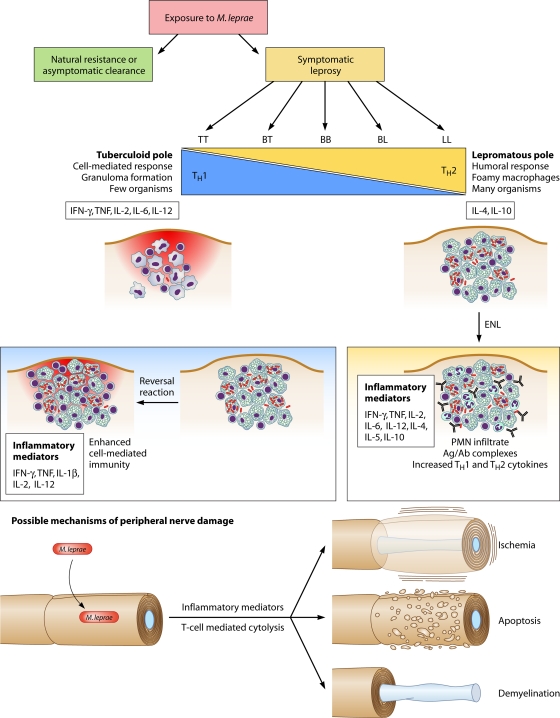FIG. 1.
The leprosy spectrum and possible mechanisms of tissue damage. Leprosy manifestations are classified along a clinical spectrum of tuberculoid (TT), borderline tuberculoid (BT), borderline borderline (BB), borderline lepromatous (BL), and lepromatous (LL) leprosy. Each pole is associated with a characteristic cell-mediated or humoral immune profile. The cell-mediated (Th1) response of the TT pole features the elimination or containment of the organism in granulomas, while the ineffective humoral response at the LL (Th2) pole allows the proliferation of mycobacteria within and around foamy macrophages. Reversal reactions reflect a sudden shift toward the Th1 pole from the BT, BB, or BL state and can lead to irreversible nerve damage (neuritis). Erythema nodosum leprosum (ENL) reactions occur in patients with BL or LL leprosy and reflect an increase in both cell-mediated and humoral responses to M. leprae. ENL is associated with the systemic release of TNF and IL-4, a brisk polymorphonuclear leukocyte (PMN) influx, and antigen-antibody (Ag/Ab) complex deposition. The mechanism of nerve damage is unclear but may involve immune injury due to the release of inflammatory cytokines or activity of cytotoxic T cells, ischemia due to edema within the perineural sheath, apoptosis, or demyelination (see discussion in the text).

